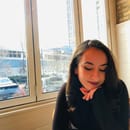Phnom Penh
The Loyola Vietnam Center took us 23 students to Cambodia this November. It was our responsibility to not only enjoy ourselves and learn, but to prepare ourselves for what we were about to see.
We had the privilege of riding tuk tuks around downtown Phnom Penh and a boat tour/ dance party on the river. Many of the monuments and high-rise buildings were not there 30 years ago. The major ethnic race in Cambodia is Khmer and I got to try some authentic Khmer food, including eggplant and ground pork with coriander. And let’s not forget the deep-fried tarantulas.
Cambodia has a rich history, yet it is a healing country.
I saw the killing fields. In April of 1975, the Khmer Rouge under Pol Pot came into Cambodia. Their mission was to create a communist society where everyone was the same. Their methods were to kill one of every four Cambodians.
There are about 300 killing fields throughout the country, however we visited The Choeung Ek Genocidal Center. Many of the mass graves have been excavated, and a large monument was built to honor the millions of people who were killed in this terrifying time.
I tried so desperately to put myself in the shoes of those who were there, yet I simply couldn’t. Their circumstances were unfathomable. My resolve was to simply be grateful for my life and circumstances, and to never forget what I saw or what happened.
The short visit was followed by a tour of Tuol Sleng, aka S21. This was a school built in the 60s, but the Khmer Rouge made it into a prison (calling it a security office). This is where many were kept and tortured before being shipped away to the killing fields. I am purposely leaving some details out here, because while these things are important to understand, they are hard to process. The school-turned-prison-turned-museum had makeshift cells perfectly intact, gallows, barbed-wire windows and photographs from the Khmer Rouge regime. It is a haunted place.
Siem Reap
A short flight north from Phnom Penh is another city called Siem Reap. This city gave us a chance for a fresh look at Cambodia, and a much more positive one too. Siem Reap, like so many other big cities in Southeast Asia, had a fun tourist sector, including a night market and a pub street.
However, on the outskirts of Siem Reap is a remote fishing village. We had the privilege of taking an eco-tour of the village and it was an amazing experience. The houses of this community were built on high stilts to protect from flooding. The economy revolves completely around fishing (besides the small tourism industry that we took part in). As we rowed along, children played in little boats while their parents unloaded the fish nets from the previous night’s fishing excursion. A large spinning machine was used to stretch out the nets and free whatever fish had been caught in the actual netting. The fishermens’ boats had tubs and tubs of these small little white fish.
Witnessing the daily life of this community– people working, children playing, elders relaxing or hanging laundry, families taking a motorboat to visit a neighbor– was unlike anything I had ever seen before. I reflected on how my life is completely different, and I couldn’t help myself but to put myself in their shoes and imagine what my life would be like if I grew up in such an environment.
We rowed through a mangrove forest, flooded by the opaque sand-brown water. We passed a boat that catches and breeds crocodiles, and it doubles as a crocodile meat restaurant! But mostly, we stuck to the forest and got a sense for the immense beauty of this small little section of the earth.
Most people travel to Siem Reap, however, for the most obvious tourist destination: Angkor Wat.
Angkor Wat is the largest religious structure in the entire world. It is an enormous monument and collection of temples, both Hindu and Buddhist. Nearby are 400 other temples, one of them with large stone faces.
Overall, this brief trip was an absolute roller coaster. It began with a beautiful tour of Cambodia’s capital city, then took a harrowing turn when we were made to look recent history in the face. It is important to see, but so hard to look at. Next we went to the home of the ancient Khmer empire and got to see completely different ways of life. Of course, wrapping up the trip seeing one of the ancient wonders of the world was pretty cool.



